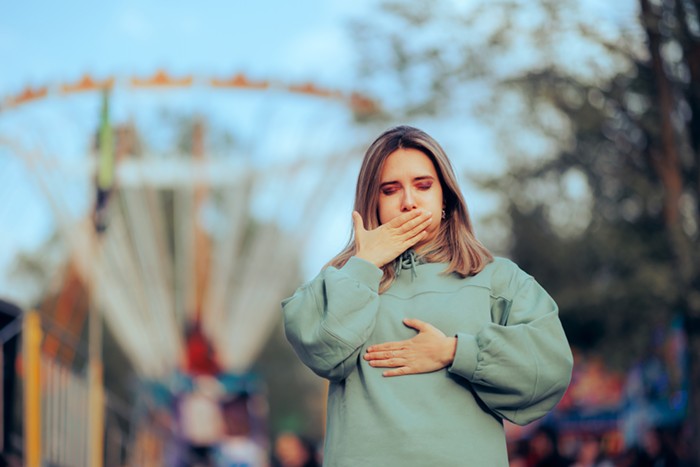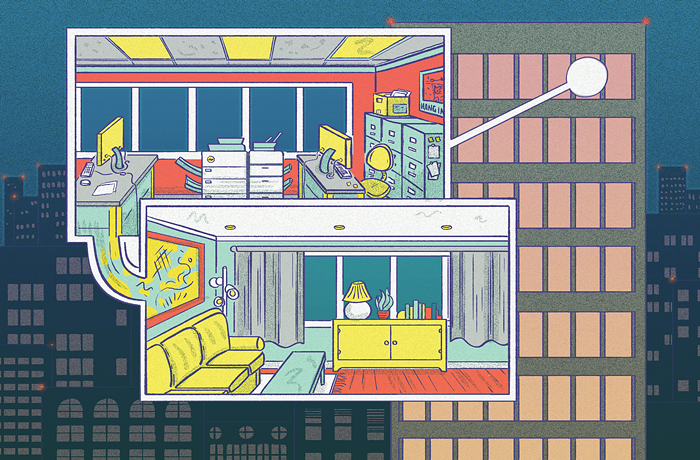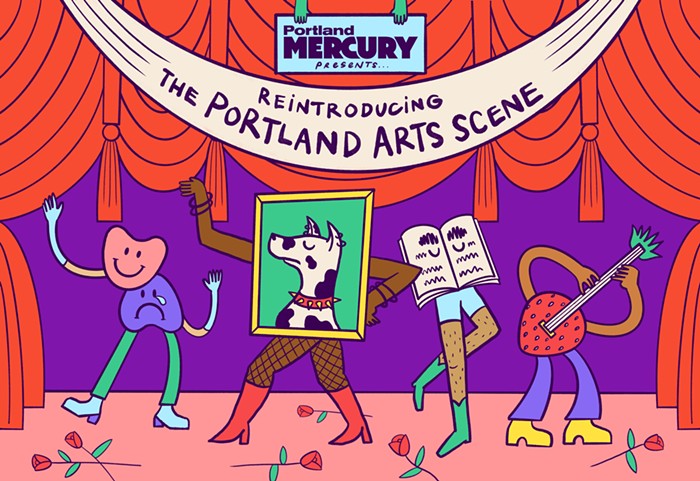Steve Doughton’s 1997 film DELTA isn’t an easy thing to exhibit. It requires a healthy expanse of blank wall, six laserdisc players and projectors, and a multi-channel soundsystem pumping out a mixture of dialogue, ambient noise, and music from British electronic producer Aphex Twin. That’s why many of the people who helped put the film together when it was shot in Portland have never laid eyes on it.
“It’s been 20 years since I’ve even seen it,” Doughton says. “Not that I watch my films very often, but I wondered if I’d ever get a chance to see the film again.”
For eight weeks starting this Saturday, he and anyone else who dares will finally get a chance to enjoy DELTA in its original form as part of an exhibition at the enormous Portland Institute for Contemporary Art (PICA) space on Northeast Hancock.
Originally commissioned for and screened at the Marianne Boesky Gallery in New York in 1997, the film is an immersive, almost overwhelming collage of color and ideas shot on Super 8 and 16mm and screened to approximate the shape of an airplane (a play on the piece’s title). The core of DELTA concerns the strange life of a young man named Doug who goes to a rave and stages mock surgeries in his living room while his parents are away. Doughton surrounds that center with an array of other characters and images that remain disconnected until a fateful climax when everything culminates into one unforgettable final scene.
Key to bringing this film back into the world is Kristan Kennedy, PICA’s visual art curator. The former New Yorker and longtime champion of Doughton’s work came upon a rough bit of footage from the time DELTA was screened in ’97, and instantly knew she had to bring it to Portland. She’s pairing it with Doomtown, an exhibition of work from artists who were Doughton’s friends and contemporaries, including David Markey and David Wojnarowicz.
“It brings together all of these things in my mind that are both complicated and beautiful about being an artist in the Pacific Northwest and New York,” says Kennedy. “It came out of an underground community that was making work and testing things, while also living in extremely challenging times with the AIDS crisis and all this angst and fear. It feels important right now to hold onto that epoch and witness it again.”













